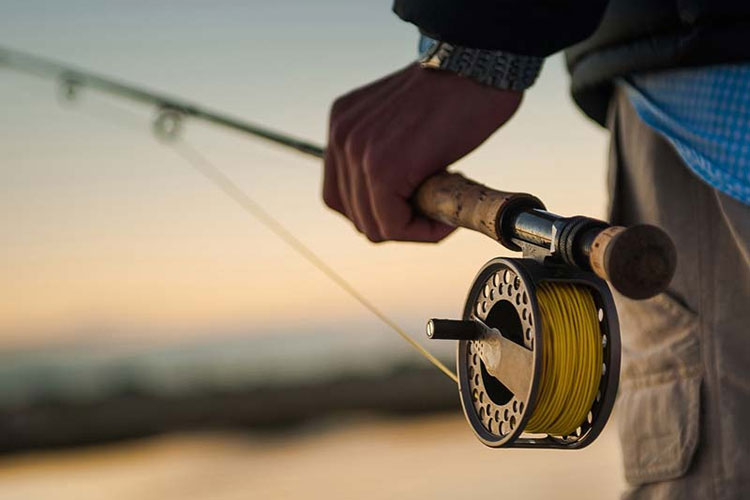You might not always be successful with fly fishing on the first try. There are just so many factors to consider. Quite different from regular fishing, mainly in terms of technique, fly fishing can be hard for beginners to master. However, even experienced enthusiasts may face it rough at times.
One of the less talked about factors significantly affecting one’s success with fly fishing is the tippet choice. Ideally, using an appropriate or well-suited tippet for the specific job would be best.
If you’re not having as much luck as you’d like fly fishing, the problem might be with your fishing tippet. Fortunately, there are proven tips and techniques to help you select the right tippet, depending on your needs.
These essential tips are meant for everyone. So whether you’re a beginner or an experienced angler, dig in, apply some or all of the tips below, and be amazed at how your fly-fishing prowess improves drastically.
Determinants of Fly Fishing Tippet Choice
Before choosing the right fly fishing tippet, it’s important, especially for beginners, to understand how fly fishing works. Generally, fly fishing gets its name from how this technique lures fish with fly baits. Fish, especially smaller species, prey on little insects, nymphs, minnows, and flies.
The first hurdle is to bait the fish without scaring them off, but that’s only one part. The tippet should also be strong enough to withstand strain and abrasion. Here’s a quick overview of factors influencing the fly fishing tippet choice.
1. Fish Species
As you’d expect, fish naturally fight back when they bite the fly, and you try to reel them in. It would be a shame if the fish won, and it’s quite common. Besides losing the fish, you’ll also end up with damaged equipment.
This is why using the right tippet for different fish species is recommended. Some fish species are small and don’t fight back as much, but they’re also quite skittish; hence, you’ll need something more realistic looking. Often, this comes with the downside of a relatively weaker tippet.
Before you settle on a specific tippet, ensure you know the fish species you’re dealing with.
2. Water and Surrounding Conditions
As mentioned before, the point of fly fishing is to bait fish into believing they’re preying on insects or nymphs. Fish are generally more sensitive to light than human vision, but their vision isn’t very detailed. However, they can distinguish an insufficiently camouflaged fly from a real fly or insect.
If you plan on fishing in clear waters, you’ll have to use a tippet that doesn’t refract too much light. Similarly, a heavier tippet would be more appropriate if you anticipate stronger currents.
3. Type of Fly Used
The type of fly you use determines your choice of fishing tippet. Heavy, large flies call for sturdier fishing tippets and vice versa. While you can use a stronger tippet with dry, light flies, it’s not always ideal since the tradeoff of possible increased visibility in the water may scare off or discourage fish from taking the bait.
Choosing the Right Fly Fishing Tippet
When it comes to fly fishing, there isn’t a one-size-fits-all solution tippet. Each circumstance is unique, and the right fly fishing tippet comes down to what you’re dealing with in the water. Here are some tips to help you choose.
1. Understand How Tippet Sizes Work
Apart from the difference in construction material, fishing tippets come in different sizes. The sizes range between 0X and 8X. Tippets rated as 0X are the heaviest and sturdy options, with 8X being the lightest size.
Your tippet should match the fly you intend to use and the fish you’re after. A significantly larger fly and fish necessitates a similarly matching heavy and sturdy tippet. The same goes for targeting smaller fish, in which case you can succeed better with a light, finer tippet.
2. Ensure Tippet Is Compatible With Leader
Two major concerns when matching tippets with leaders are the performance rating of the whole setup and knot-forming. Usually, compatible or similar materials form better bonds and knots than when you use different materials. Different materials have unique properties which may adversely affect how the knot behaves.
A fluorocarbon and nylon knot is prone to slippage. This leads to more equipment losses and escapes that would normally be a great catch. In addition to this, it’s good to bring up the point of how different materials behave differently underwater.
Fluorocarbons are almost inconspicuous underwater but don’t present well in water compared to nylon. In contrast, while nylon presents better underwater, it’s pretty visible and can easily spook fish, especially in clear water. For best results, using a fishing tippet compatible with the leader is better. So nylon should go with a nylon or fluorocarbon tippet with a fluorocarbon leader.
Conclusion
Beyond matching tippet and leader materials, the ability to tie proper knots can improve or reduce your angling chances. No matter the type of tippet, fly, or leader you use, you’ll lose your equipment and fish often if you can’t secure them with proper knots.
You can practice with many knots, but some common knots include the fisherman’s knot or the improved clinch knot, Palomar knot, double surgeon’s knot, and loop to loop. For starters, you can use either the double surgeon knot, loop-to-loop knot or a combination of the two to secure your equipment.



